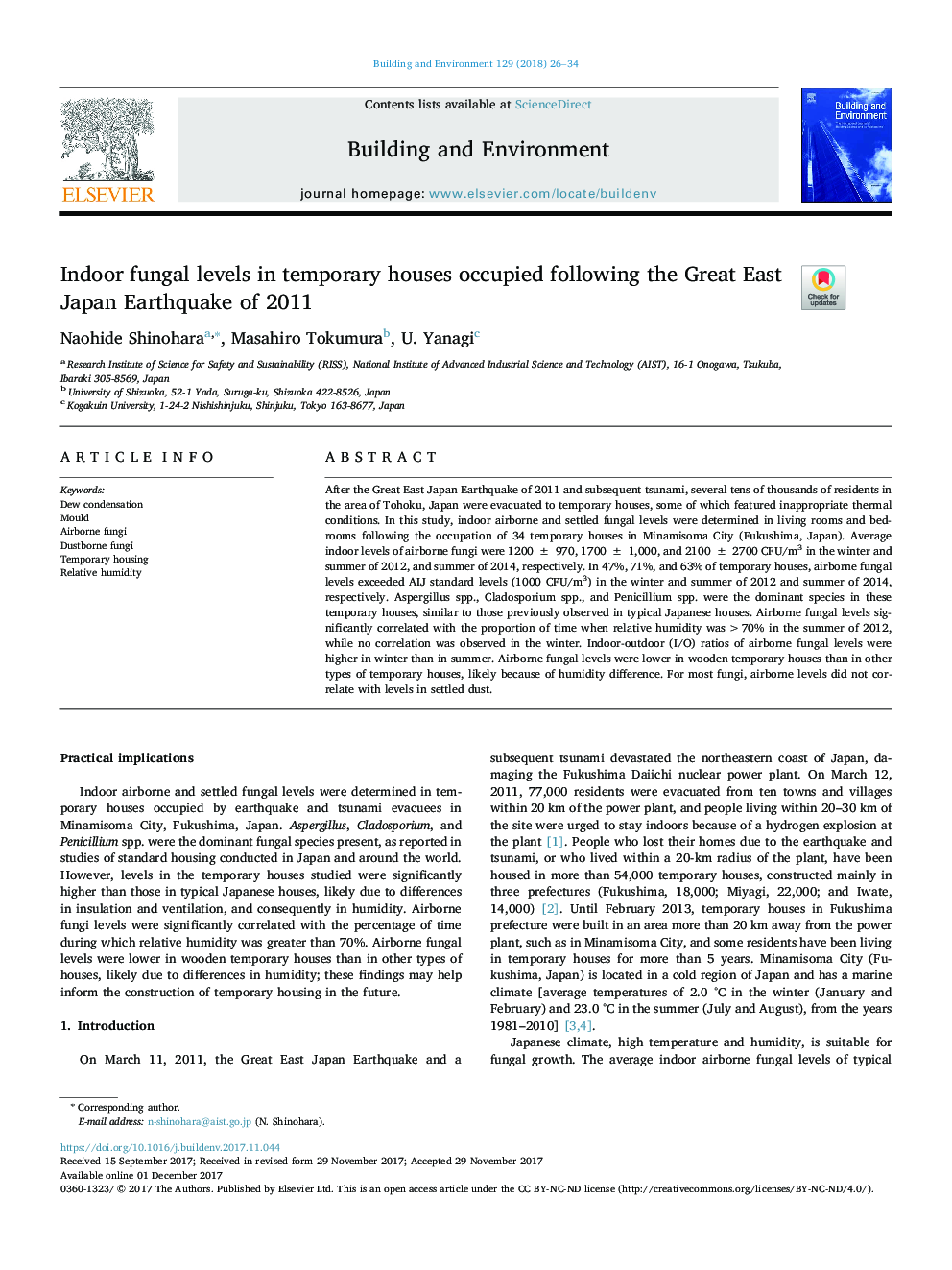| کد مقاله | کد نشریه | سال انتشار | مقاله انگلیسی | نسخه تمام متن |
|---|---|---|---|---|
| 6698194 | 1428363 | 2018 | 9 صفحه PDF | دانلود رایگان |
عنوان انگلیسی مقاله ISI
Indoor fungal levels in temporary houses occupied following the Great East Japan Earthquake of 2011
ترجمه فارسی عنوان
سطوح قارچ داخل سالن در خانه های موقت تحت اشغال زلزله بزرگ ژاپن شرق 2011 قرار دارد
دانلود مقاله + سفارش ترجمه
دانلود مقاله ISI انگلیسی
رایگان برای ایرانیان
کلمات کلیدی
موضوعات مرتبط
مهندسی و علوم پایه
مهندسی انرژی
انرژی های تجدید پذیر، توسعه پایدار و محیط زیست
چکیده انگلیسی
After the Great East Japan Earthquake of 2011 and subsequent tsunami, several tens of thousands of residents in the area of Tohoku, Japan were evacuated to temporary houses, some of which featured inappropriate thermal conditions. In this study, indoor airborne and settled fungal levels were determined in living rooms and bedrooms following the occupation of 34 temporary houses in Minamisoma City (Fukushima, Japan). Average indoor levels of airborne fungi were 1200 ± 970, 1700 ± 1,000, and 2100 ± 2700 CFU/m3 in the winter and summer of 2012, and summer of 2014, respectively. In 47%, 71%, and 63% of temporary houses, airborne fungal levels exceeded AIJ standard levels (1000 CFU/m3) in the winter and summer of 2012 and summer of 2014, respectively. Aspergillus spp., Cladosporium spp., and Penicillium spp. were the dominant species in these temporary houses, similar to those previously observed in typical Japanese houses. Airborne fungal levels significantly correlated with the proportion of time when relative humidity was >70% in the summer of 2012, while no correlation was observed in the winter. Indoor-outdoor (I/O) ratios of airborne fungal levels were higher in winter than in summer. Airborne fungal levels were lower in wooden temporary houses than in other types of temporary houses, likely because of humidity difference. For most fungi, airborne levels did not correlate with levels in settled dust.
ناشر
Database: Elsevier - ScienceDirect (ساینس دایرکت)
Journal: Building and Environment - Volume 129, 1 February 2018, Pages 26-34
Journal: Building and Environment - Volume 129, 1 February 2018, Pages 26-34
نویسندگان
Naohide Shinohara, Masahiro Tokumura, U. Yanagi,
